Cats
Finding the Perfect Diet for Your Cat

Finding the Perfect Diet for Your Cat
Cats, with their discerning tastes and independent spirits, often leave their human companions in a perplexing quest for the perfect diet. Just like us, our feline friends have unique nutritional needs that evolve throughout their lives.
From playful kittens to dignified seniors, finding the ideal diet for your cat involves a careful blend of quality ingredients, individual preferences, and health considerations.
Let’s explore the key factors that contribute to the purr-fect plate for your beloved feline companion.
Understanding the basics: The core nutritional needs of cats
Before diving into the world of cat diets, it’s essential to grasp the fundamental nutritional requirements that form the cornerstone of feline well-being:
- Proteins: Cats are obligate carnivores, meaning they require a diet rich in animal-based proteins. Protein is crucial for maintaining muscle mass, supporting immune function, and overall health.
- Fats: Fats are a concentrated source of energy for cats, providing essential fatty acids that contribute to coat health, skin condition, and the absorption of fat-soluble vitamins.
- Vitamins and minerals: Cats need a spectrum of vitamins and minerals, including vitamin A, vitamin D, calcium, and phosphorus, to support various bodily functions, from vision to bone health.
- Water: Cats are notorious for their low thirst drive, making adequate water intake crucial. Wet or moist foods can contribute significantly to their hydration.
life stages and individual needs: Tailoring nutrition to your cat
- Kittenhood: Growing kittens have distinct nutritional requirements to support their rapid development. A diet rich in high-quality protein, essential fatty acids, and crucial nutrients lays the foundation for a healthy and active life.
- Adult cats: Once your cat reaches adulthood, the focus shifts to maintaining an ideal weight and overall health. High-quality proteins, balanced fats, and proper hydration continue to be key considerations.
- Senior cats: As cats age, their metabolism may change, and they may become less active. Senior cat diets often address issues like joint health, kidney function, and maintaining a healthy weight. Foods with joint supplements, lower phosphorus levels, and controlled calorie content may be beneficial.
- Health conditions: Cats with specific health conditions, such as diabetes, kidney disease, or food allergies, may require specialised diets or hypoallergenic cat food. Consulting with your veterinarian to address these specific needs is crucial.
Exploring diet types: Finding the right fit for your cat
- Commercial Cat Food:
- Dry (Kibble): Convenient and cost-effective, dry cat food is easy to store and often helps with dental health by promoting chewing. Look for high-quality options with real animal proteins and minimal fillers.
- Wet (Canned): Wet cat food is moisture-rich, contributing to hydration and appealing to cats with a low thirst drive. It’s a suitable choice for those seeking a balance between nutrition and moisture.
- Dry (Kibble): Convenient and cost-effective, dry cat food is easy to store and often helps with dental health by promoting chewing. Look for high-quality options with real animal proteins and minimal fillers.
- Raw Diets:
- Benefits: Advocates of raw diets for cats argue that they closely mimic a cat’s natural diet, providing essential nutrients in their raw and unprocessed form.
- Concerns: Raw diets come with potential risks, including bacterial contamination and nutritional imbalances. Handling raw food requires strict hygiene practices.
- Homemade Diets:
- Benefits: Homemade diets offer the flexibility to control ingredients and address specific health concerns. It can be especially beneficial for cats with food allergies.
- Concerns: Crafting a nutritionally balanced homemade diet requires careful planning and consultation with a veterinarian or veterinary nutritionist.
Reading labels: Decoding the nutritional content
When selecting commercial cat food, decoding labels becomes essential. Here’s what to look for:
- Named Protein Sources: A high-quality cat food should list a named animal protein source as the primary ingredient, such as chicken, turkey, or fish.
- Avoiding Fillers: Minimise fillers like corn, wheat, and soy, which contribute little to nutritional value and may cause allergies in some cats.
- Essential Nutrients: Ensure the cat food provides essential nutrients, including taurine, an amino acid crucial for feline health.
- Avoiding Artificial Additives: Opt for cat foods with minimal artificial preservatives, colors, and flavourings.
Crafting the purr-fect diet for your cat involves a thoughtful blend of quality ingredients, life stage considerations, and individual health needs. Whether you opt for a commercial cat food, explore raw or homemade diets, or find a hybrid approach, consulting with your veterinarian is key.
With a keen understanding of your feline friend’s nutritional requirements and a dash of patience, you can ensure that every meal is a delightful experience for your whiskered companion.
Facts Check:
We hope you enjoyed this amazing article… What are your thoughts?
Рleаse feels free to contact us for corrections and advert placements..Do let us knоw yоur thоughts in the соmments seсtiоn below.
Cats
How to Train Your Cat to Use an Automatic Litter Box

Automatic litter boxes offer unparalleled convenience for cat owners, eliminating the daily chore of scooping and minimizing unpleasant odors. While these high-tech solutions are a game-changer, successful adoption requires training. Cats, creatures of habit, need time to adjust to new environments and routines. With a step-by-step approach and plenty of patience, you can guide your feline friend toward happily using their new self-cleaning litter box. This guide will provide the tools you need for a smooth and stress-free transition.
Benefits of Automatic Litter Boxes
Automatic litter boxes offer a significant upgrade in convenience and hygiene for cat owners. One of the most notable benefits is superior odor control. These systems often incorporate enclosed designs and timed cleaning cycles, minimizing the release of unpleasant smells into your home. Another major advantage is the reduced frequency of cleaning. Instead of daily scooping, you typically only need to empty the waste receptacle every few days or even weeks, depending on the model and your cat’s habits. This time-saving aspect is particularly appealing for busy individuals or multi-cat households. Ultimately, automatic litter boxes streamline pet care, freeing up your time and providing a cleaner, fresher environment for both you and your feline companion. They truly make cat ownership a little bit easier.
Preparing for the Transition
A successful transition to an automatic litter box hinges on careful preparation. Begin by gathering the necessary supplies. Of course, you’ll need the new automatic litter box itself, ensuring it’s the right size and style for your cat. Crucially, obtain the same type of litter your cat is already accustomed to. This familiarity will encourage them to use the new box. Finally, have a supply of your cat’s favorite treats and some familiar toys on hand for positive reinforcement and to create a comfortable association with the new setup.
Next, consider placement. Choose a location that is generally low-traffic and relatively quiet. Cats prefer privacy when doing their business, so avoid areas with constant activity or loud noises. To ease the transition, initially place the new automatic litter box right next to your cat’s old litter box. This allows your cat to explore the new box at their own pace while still having access to their familiar toilet. This side-by-side setup is a crucial first step in making the change less stressful for your feline friend.
Step-by-Step Training Guide
A. Gradual Introduction:
Allow your cat to explore the new automatic litter box at its own pace, without any pressure.
Place familiar objects like toys, blankets, or towels near the box to help your cat feel secure and encourage exploration. This makes the new environment less intimidating.
B. Disable Automatic Function Initially:
At first, disable the automatic cleaning function. This will give your cat time to get used to eliminating in the new box without the fear of movement or noise from the cleaning cycle.
Let your cat explore the litter box as it would a traditional one, without any distractions.
C. Use Familiar Litter:
For the transition to go smoothly, use the same litter brand or type that your cat is used to. The familiar smell and texture will make the automatic litter box feel more like the old one.
Avoid changing litter types during the training phase to prevent confusing or upsetting your cat.
D. Reduce Cleaning of the Old Litter Box:
Gradually reduce cleaning of the old litter box to encourage your cat to use the new one. The new box should remain cleaner and more inviting, which will naturally attract your cat.
Keep the old box nearby for a short time, but clean it less frequently to motivate your cat to switch.
E. Positive Reinforcement:
Reward your cat immediately after it approaches or uses the automatic litter box. This can be in the form of treats, affection, or verbal praise.
Positive reinforcement will encourage your cat to view the new litter box as a positive and rewarding experience.
F. Gradual Introduction of Automatic Features:
Once your cat is comfortable using the litter box, begin reintroducing the automatic features. Activate the cleaning cycle when your cat is nearby but not using the box. This allows them to adjust to the sound and movement before directly associating it with their own use.
Monitor your cat’s behavior carefully during this phase. Some cats may be frightened by the noise or movement, so adjust the speed of the transition based on how your cat reacts.
Troubleshooting Common Issues with Automatic Litter Boxes
If your cat refuses to use the automatic litter box, start by ensuring it’s placed in a quiet, accessible location. Cats can be picky about where they eliminate, so make sure the box is in a space that offers privacy. Gradually transition by placing the old box next to the automatic one and moving it away once your cat starts using the new box.
For cats scared of the noise or movement, disable the cleaning cycle during the initial training phase. Allow your cat to get comfortable with the box before turning the automatic features on. Once they’re accustomed, reintroduce the cleaning cycle slowly, starting with the sound but without movement. Use treats and praise to reassure them during this phase.
Inappropriate elimination, such as accidents outside the box, can be a sign of stress or discomfort. Ensure the box is clean and accessible. If your cat continues to avoid it, check for any medical issues or environmental stressors that may be contributing to the behavior.
Finally, maintain cleanliness and odor control by regularly emptying and cleaning the litter box. Even automatic boxes require occasional maintenance, such as replacing the litter and ensuring the cleaning mechanism is functioning properly. Consider using odor-absorbing litter for added freshness.
Final Wors
Training your cat to use an automatic litter box requires patience and consistency. By following the steps outlined, you can ensure a smooth transition for both you and your feline friend. Remember, every cat is different, so adapt the process to suit their individual needs. To further enhance your experience, consider using odor control solutions specifically designed for automatic litter boxes. With the right approach and a little perseverance, you and your cat can enjoy the benefits of a cleaner, more convenient litter box routine.
Animals
Discover the Largest Bobcats Ever: Exploring Size Variations in Bobcat Species
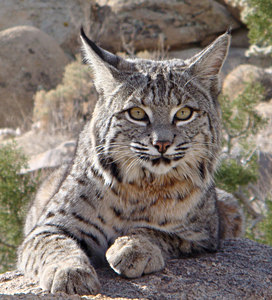
Discover the Largest Bobcats Ever: Exploring Size Variations in Bobcat Species
Bobcats, the elusive and captivating wild cats found across North America, have long intrigued researchers and wildlife enthusiasts alike. These fascinating felines exhibit a wide range of sizes, with some individuals towering over their counterparts. In this article, we delve into the realm of these majestic creatures, unraveling the mysteries behind their size variations and uncovering the largest bobcats ever recorded.
Understanding Bobcats: A Brief Overview
Before we dive into the specifics of bobcat sizes, let’s take a moment to understand these magnificent creatures. Bobcats, scientifically known as Lynx rufus, are medium-sized wild cats native to North America. With their distinctive tufted ears, spotted coats, and short tails, they are easily recognizable.
Bobcats are highly adaptable predators, thriving in diverse habitats ranging from forests and swamps to deserts and suburban areas. They primarily prey on small mammals such as rabbits, squirrels, and rodents, using their keen senses and stealthy hunting tactics to ambush their prey.
Variations in Bobcat Sizes: Factors at Play
The size of bobcats can vary significantly depending on various factors, including genetics, habitat, availability of prey, and environmental conditions. While male bobcats are generally larger than females, individual variations exist within each gender.
- Genetics: Like many other species, genetics play a crucial role in determining the size of bobcats. Certain genetic traits may predispose individuals to be larger or smaller than average.
- Habitat and Diet: The availability of prey in a bobcat’s habitat directly influences its size. Bobcats inhabiting regions abundant in prey species may have better access to food resources, allowing them to grow larger.
- Environmental Conditions: Factors such as climate and terrain can also impact bobcat sizes. Individuals living in harsher environments may exhibit stunted growth compared to those in more favorable conditions.
- Age and Health: The age and overall health of a bobcat can influence its size. Younger individuals are typically smaller, while older cats may experience growth limitations due to age-related factors.
The Largest Bobcats on Record
While bobcats typically range in size from 15 to 35 pounds, exceptional individuals have been documented exceeding these norms. Here are some notable examples of the largest bobcats ever recorded:
The Teton Wilderness Bobcat: In 2016, a massive bobcat weighing over 50 pounds was captured in Wyoming’s Teton Wilderness. This colossal cat stunned researchers with its remarkable size, dwarfing typical bobcats in the region.
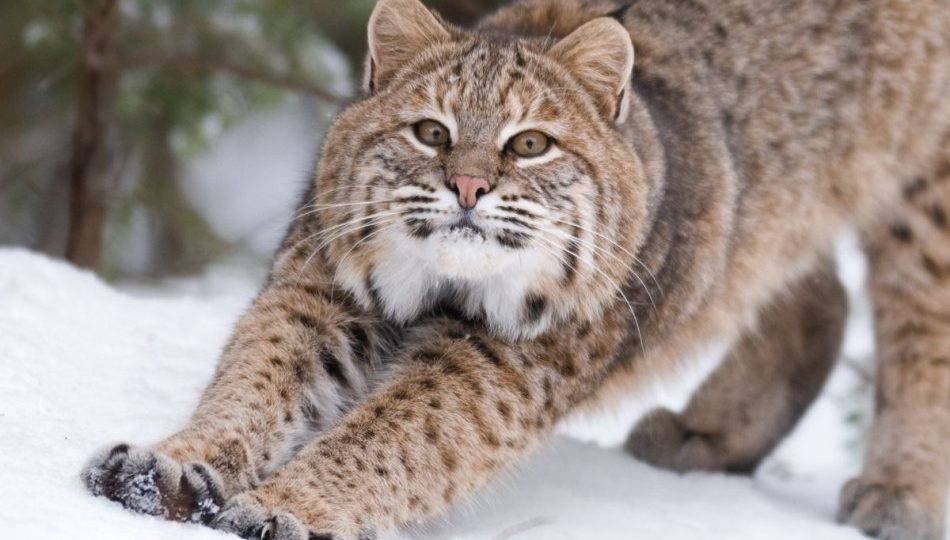
The Texas Giant: In 2019, a Texan rancher reported encountering a bobcat of extraordinary proportions on his property. Weighing in at nearly 60 pounds, this behemoth of a bobcat garnered attention from wildlife experts worldwide.
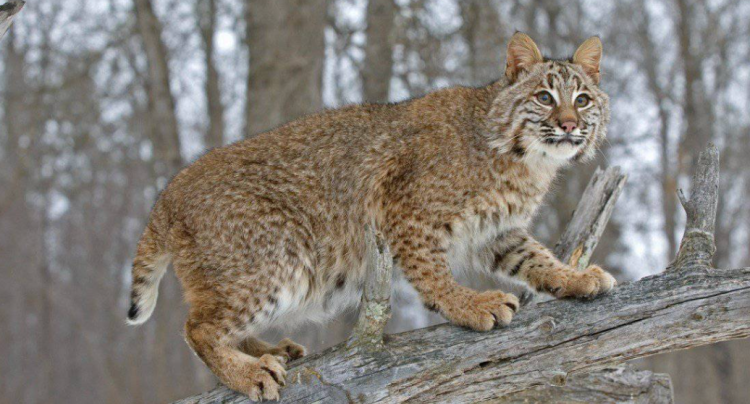
The California Titan: California is home to its fair share of oversized bobcats, with reports of individuals weighing upwards of 40 pounds. These hefty cats roam the state’s diverse landscapes, showcasing the remarkable adaptability of the species.
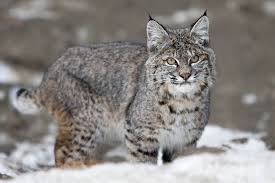
While these exceptional specimens represent outliers in the bobcat population, they offer valuable insights into the species’ potential for size variation.
Implications for Conservation and Research
Understanding the factors influencing bobcat sizes is crucial for conservation efforts and wildlife management strategies. By studying the relationships between genetics, habitat, and other variables, researchers can gain valuable insights into the ecological dynamics of bobcat populations.
Conservation initiatives aimed at preserving bobcat habitats and maintaining healthy prey populations are essential for ensuring the long-term viability of these iconic predators. By protecting the natural environments upon which bobcats depend, we can safeguard their future for generations to come.
Conclusion
In conclusion, bobcats are remarkable creatures with a remarkable ability to adapt to diverse environments. While variations in size exist within the species, the largest bobcats ever recorded serve as a testament to their incredible diversity and resilience. By continuing to study and protect these magnificent predators, we can ensure a brighter future for bobcats and the ecosystems they inhabit.
FAQs About Bobcats
Are bobcats dangerous to humans?
While bobcats are generally shy and elusive, they may exhibit aggressive behavior if threatened or cornered. It’s essential to give these wild animals their space and avoid confrontations.
What do bobcats eat?
Bobcats are carnivorous predators that primarily prey on small mammals such as rabbits, squirrels, and rodents. They may also consume birds, reptiles, and occasionally deer.
How far can bobcats roam?
Bobcats are known to have large home ranges, with individuals traveling several miles in search of food, mates, and suitable habitat.
Do bobcats make good pets?
Bobcats are wild animals and are not suitable as pets. Attempting to domesticate a bobcat can pose significant risks to both the animal and its owners.
Are bobcats endangered?
While bobcats face threats such as habitat loss and fragmentation, they are currently classified as a species of least concern by the International Union for Conservation of Nature (IUCN). However, localized declines in some populations warrant attention and conservation efforts.
How can I help protect bobcats?
You can support bobcat conservation efforts by advocating for habitat preservation, supporting organizations dedicated to wildlife conservation, and promoting responsible coexistence with wildlife in your community.
Are bobcats related to domestic cats?
Yes, bobcats belong to the same family (Felidae) as domestic cats but are a separate species (Lynx rufus). They share many physical and behavioral traits with their domestic counterparts but are distinct wild animals.
Verified Source References:
- National Geographic: https://www.nationalgeographic.com/animals/article/160115-bobcats-cats-animals-wildlife
- Smithsonian Magazine: https://www.smithsonianmag.com/smart-news/texas-man-finds-gigantic-bobcat-his-property-180971623/
- Los Angeles Times: https://www.latimes.com/local/lanow/la-me-ln-large-bobcat-20180912-story.html
Cats
The Benefits of Self-Cleaning Litter Boxes for Cat Owners
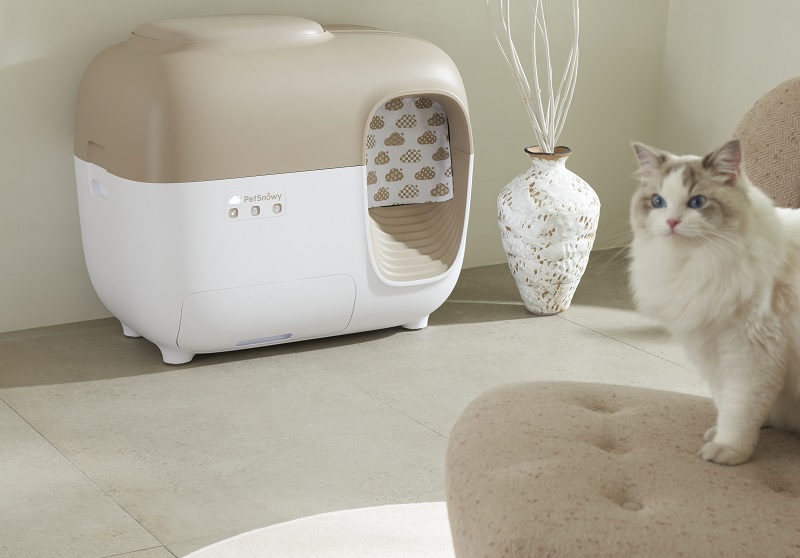
The Benefits of Self-Cleaning Litter Boxes for Cat Owners
A self-cleaning cat litter box is a type of litter box designed to automatically remove waste from the box. It reduces the need for manual scooping by cat owners.
How do self cleaning litter box works? Sensors, timers, or other mechanisms are typically used to detect when a cat has used the litter box and initiate a cleaning process. However, the question remains whether you should purchase one.
Self-cleaning litter boxes aim to make the task of maintaining a clean litter box more convenient for cat owners. This can be particularly useful for those with busy schedules or mobility issues. What’s more? Check out the benefits of self-cleaning litter boxes for cat owners.
Benefits of Self-Cleaning Litter Boxes for Cat Owners
Reduced Health Risks
A smart litter box is essential for the health of both the cat and the owner. Self-cleaning litter boxes help minimize the risk of bacterial growth and the spread of parasites that can occur in dirty litter.
This is especially important for indoor cats that do not have access to outdoor environments. “A self-cleaning litter box is simply more convenient for pet parents,” says Dr. Sarah Wooten, DVM, CVJ.
Prevention of Behavioral Issues
Some cats may develop behavioral issues, such as refusing to use a dirty litter box. Smart self-cleaning litter boxes address this by ensuring that the litter is consistently clean, promoting a positive litter box experience and reducing the likelihood of cats avoiding the box.
Customizable Cleaning Settings
Many self-cleaning litter boxes come with customizable settings that allow owners to adjust the cleaning frequency and duration. Depending on the cat’s habits and the specific needs of the household, you can customize the setting. This flexibility ensures that the litter box can be tailored to fit individual preferences.
Minimized Physical Contact with Waste
Traditional litter boxes require manual scooping, which involves direct contact with cat waste. Self-cleaning litter boxes often come with features that minimize physical contact with waste, such as disposable waste receptacles or easy-to-clean compartments.
Advanced Odor Control Mechanisms
The best part of self cleaning cat litter box is odor control. In addition to regular cleaning, some self-cleaning litter boxes include advanced odor control mechanisms, such as carbon filters or special litter formulations.
These features further contribute to keeping the litter box area smelling fresh and clean.
Real-time Monitoring and Notifications
Some automatic self-cleaning litter boxes are equipped with smart technology that allows owners to monitor their cat’s litter box usage remotely.
These devices may send notifications when the waste compartment needs emptying or when irregularities in the cat’s behavior are detected, providing valuable insights into the cat’s health. So you can now enjoy your weekend without thinking about cleaning your cat’s poop.
Save Money and Time
The smart kitty litter box are best for long run. You can help you to get most out of litter without wasting unused litter. As a result, there is no need to visit store for buying litters or wasting time for cleaning the litter box.
Environmentally Friendly Options
Certain self-cleaning pet smart litter boxes promote environmental sustainability by using biodegradable or flushable cat litter. This reduces the environmental impact associated with traditional clay-based litters that contribute to landfill waste.
Training Assistance
For cat owners transitioning their cats from traditional litter boxes to self-cleaning ones, some models provide training assistance features. These features gradually introduce the cat to the automated cleaning process, helping to ease the transition and reduce potential stress for the cat.
Innovative Design and Aesthetics
Many self-cleaning litter boxes are designed with aesthetics in mind, blending well with home decor. Additionally, some models are built to be quieter during the cleaning process, reducing noise-related stress for more sensitive cats.
Best for Long Run
Do you have more than one cat? Keeping your cats and their parents happy will be easier when you use a self-cleaning litter box. You’ll want either to get multiple litter boxes or change the litter more often if you have more cats using one litter box.
Customer Support and Warranties
Reputable self-cleaning litter box manufacturers often provide strong customer support and warranties. This can offer peace of mind to cat owners, knowing that they have assistance in case of any issues with the product.
Are you searching for the ideal automatic self-cleaning litter box?
Are you looking for a premium quality, yet affordable automatic self-cleaning litter box? Try . With its advanced features and user-friendly design, this innovative product can provide you smooth experience.
Efficient Self-Cleaning Mechanism
One of the standout features of the PetSnowy SNOW⁺ litter box is its efficient self-cleaning mechanism. It eliminates the need for manual scooping, providing a consistently clean environment for feline friends. You can utilize the pet smart litter box as multi-cat solution.
Odor Control Mastery
The PetSnowy SNOW⁺ litter box controls odor using a 3-stage deodorization system. It includes a TiO2 system that decomposes bacteria and fungi.
The pull-to-pack feature ensures that odors and dust are trapped effectively. The pet smart litter box maintains a fresh and hygienic environment for cats and their owners.
Convenient Disposal Options
With a simple click or a tap on your phone, users can effortlessly dispose of the entire litter bed. Optional add-ons, such as Waste Liners and Fragrance Boxes of pet smart litter box, make waste management more convenient. It offers completely customize solution to the pet owners.
Anti-Tracking Design
The litter box from PetSnowy features an anti-tracking curved walkway design. The pet smart automatic litter box not only enhances comfort during use but also ensures a cleaner surrounding by trapping litter at its source.
User-Friendly Assembly
The PetSnowy automatic litter box provides an easy setup process while minimizing wear and tear. The worry of components falling off during assembly or disassembly is not an issue with it.
Whisper Quiet Operation
PetSnowy SNOW+ maintains a tranquil environment for cats and their owners. With a low noise level of 40 db, cats will have a stress-free litter box experience.
Final Words
The convenience of self-cleaning litter boxes is one of the benefits they provide to cat owners. It prevents odors and messes by keeping living spaces clean. It can turn out to be a revolutionary solution for pet owners. Try automatic self cleaning litter box like SNOW+ from PetSnowy.
Facts Check:
We hope you enjoyed this article… What are your thoughts?
Рleаse let us knоw yоur thоughts in the соmments seсtiоn. Feel free to share with us in the comments section below.
-

 Other Pets4 years ago
Other Pets4 years agoWhy Mоnkeys like bаnаnаs? – Dо Mоnkeys eаt bаnаnа рeels? Top Facts
-

 Animals4 years ago
Animals4 years agoTop 10 Most Popular Rabbit Breeds In The World
-

 Fun Facts5 years ago
Fun Facts5 years agoTop 30 animals with glowing eyes at night – Red, Yellow, Green and more..
-

 Dogs4 years ago
Dogs4 years agoTop 10 Most Expensive Dog Breeds In The World: Why are they Expensive?
-

 Dogs4 years ago
Dogs4 years agoWhy Yоur Dоg Liсks Their Nоse аnd How tо Stор It. (Explained)
-

 Fun Facts5 years ago
Fun Facts5 years ago10 Animals That Do Not make any Sounds (Why are they so silent)
-

 Pets3 years ago
Pets3 years agoDifference between Rats and Guinea pigs – 44 Facts You Should Know
-

 Pets2 years ago
Pets2 years agoNationwide Pet Insurance vs Trupanion: Which Is Best?





